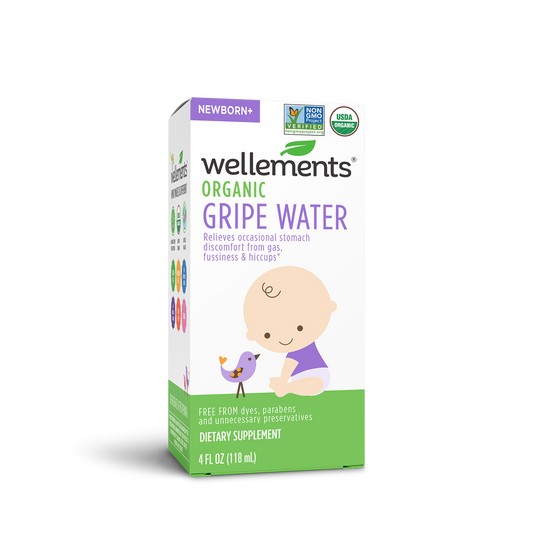Baby Colic vs Gas: What's the Difference?
| updated:Share

Bringing home a new baby is a joyous occasion, but that doesn’t mean it’s easy. Even healthy babies require a lot of work: late night feedings and endless diaper changing is just the tip of the iceberg. However, it can get even more difficult if your newborn is experiencing discomfort. If it’s a matter of gas, organic tummy products for infants may soothe your little one. However, if it’s colic, you’ll need to take a different approach.
How can you tell the difference between colic and gas? Here’s everything you need to know.
What Is Gas?
Babies can get gas just like adults — and since their digestive systems aren’t fully developed, they’re actually more likely to experience it. Gas is naturally generated by the body and isn’t a bad thing in and of itself, but having excessive gas can create discomfort. These “air bubbles” can create pressure in babies’ sensitive tummies, leading to crying and fussiness.
The good news is, your pediatrician can treat and help reduce gas to alleviate your child’s discomfort. If you suspect your baby has gas, look for these symptoms:
- Obvious relief after gas has been passed
- Squirming
- Arching
- Increased fussiness, especially after feeding
What Is Colic?
Colic is a condition that includes fussing and crying for no obvious reason. Your child may have a clean diaper, have just been fed and be otherwise healthy, but continues to cry no matter what kind of comfort you offer. Of course, many babies have finicky days — how can you tell if this is normal fussiness or a case of colic?
Doctors diagnose colic by first eliminating other potential causes. After all, your child may have a medical condition that you can’t see, which is why it’s important to document any additional symptoms, such as blood in the stool. Your doctor may run some tests to rule out the most common causes of infant discomfort.
If everything comes back clear, your child’s fussiness may be caused by colic. To qualify as colic, crying usually meets or exceeds “the rule of three’s”:
- Occurs at least three days a week
- Occurs for at least three hours a day
- Pattern continues for at least three weeks
How To Soothe Colic
The unfortunate thing about colic is, there’s no magic “cure.” Instead, there are a number of comforting techniques and home remedies you can try. Hopefully, one or more will soothe your child.
Swaddling is a popular comforting technique that involves wrapping your baby tightly, but comfortably, in a light blanket. Many babies feel safe when swaddled and are therefore likely to quiet. However, some children dislike being restrained and may squirm and become more fussy.
White noise is another soothing method that can be especially useful when trying to help your baby sleep. There are many white noise machines on the market, many of which have timers you can set to shut off at 15, 30 or 60 minutes.
With colic comes occasional stomach discomfort and gas. Consider gripe water to ease these issues and help your baby feel more comfortable.
Finally, many babies are comforted by swaying or rocking. These gentle motions can lull babies to sleep, giving you a chance to recover. If your child only calms when being rocked, you should invest in a swing or rocking seat.
4.4 /
5.0
(64)
64
total reviews
Gripe Water
Sale price
$12.49
When To Contact Your Doctor
If your child is crying excessively or without an obvious reason, you should schedule an appointment with your healthcare provider. While it may turn out to be a case of colic, which generally goes away after three months, distress may be a sign of a serious medical condition.
The good news is, there are a lot of resources out there for parents, such as mommy blogs, discussing how to soothe colicky babies. If you feel like you’re at your wits’ end, there’s help out there.



